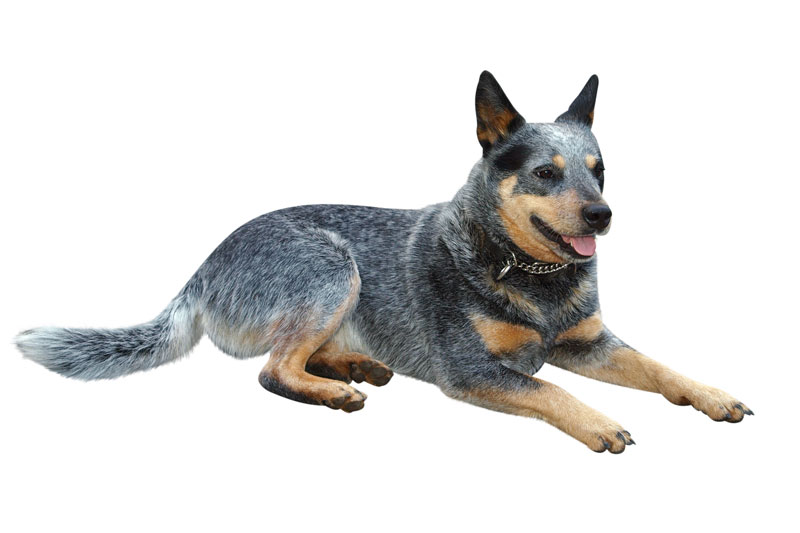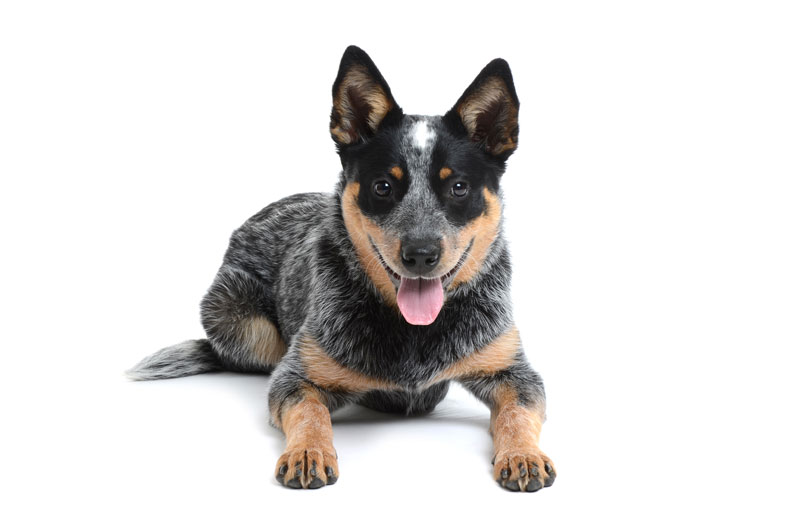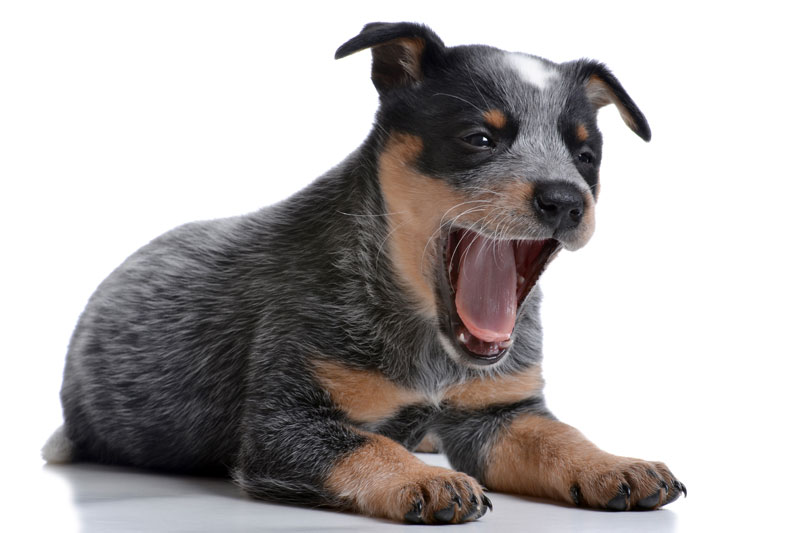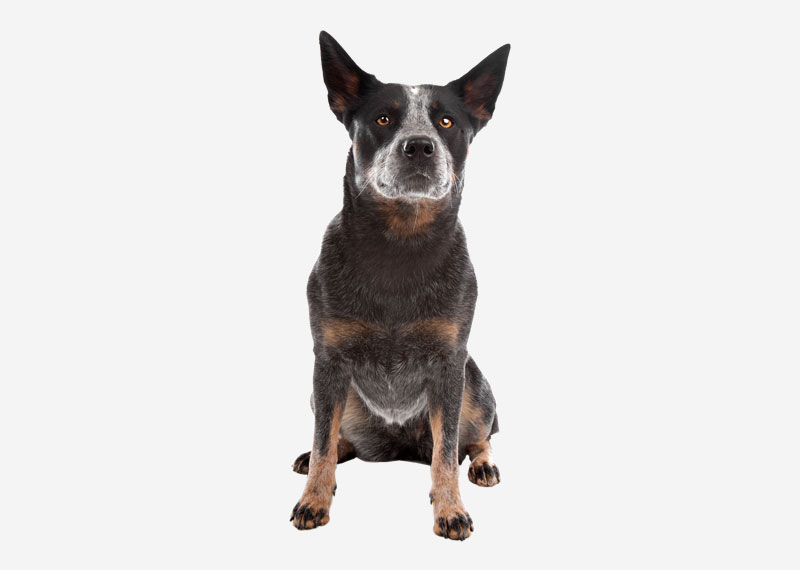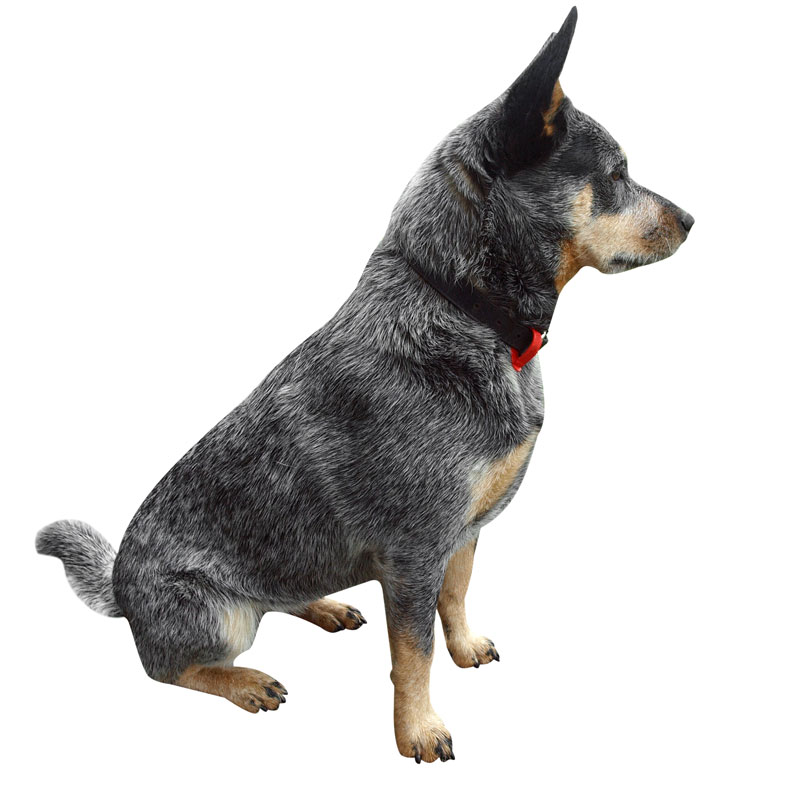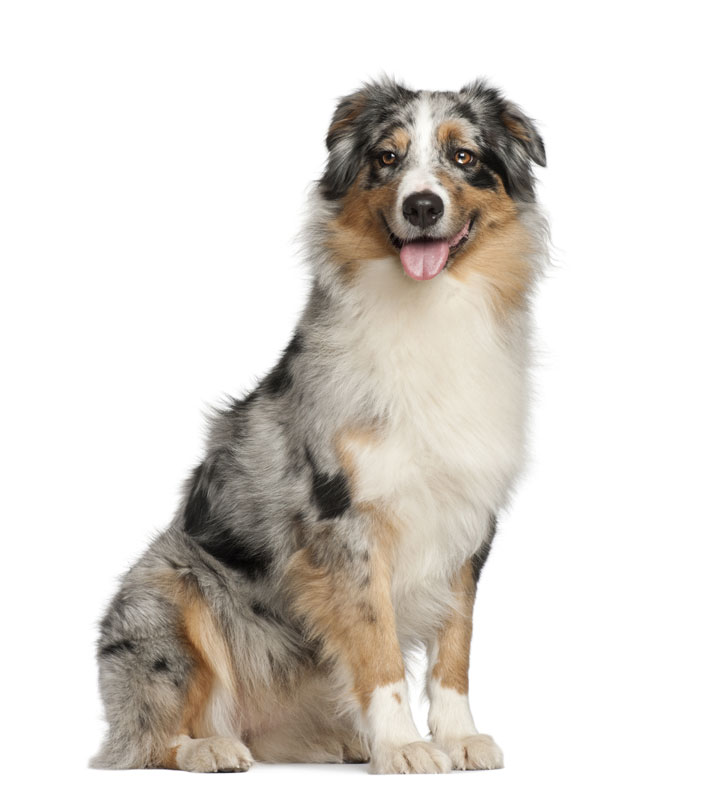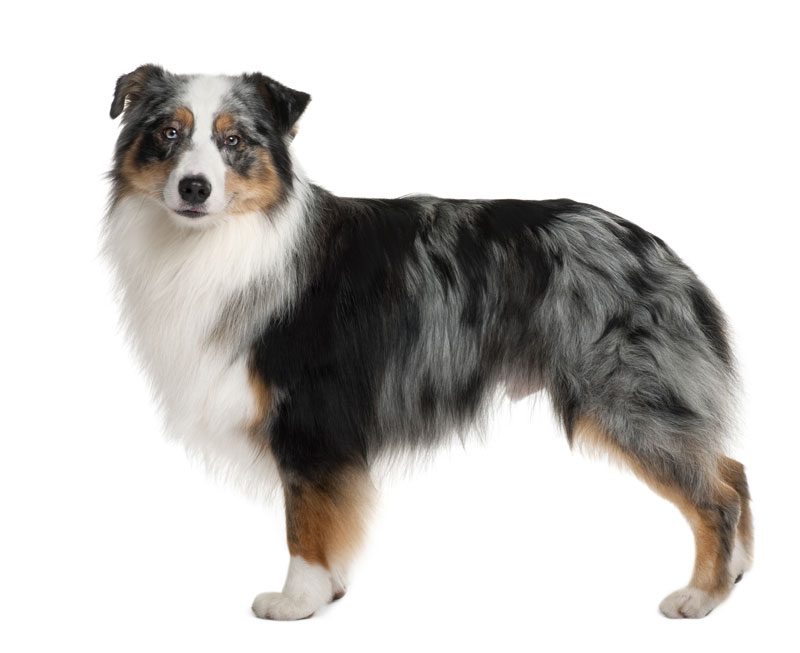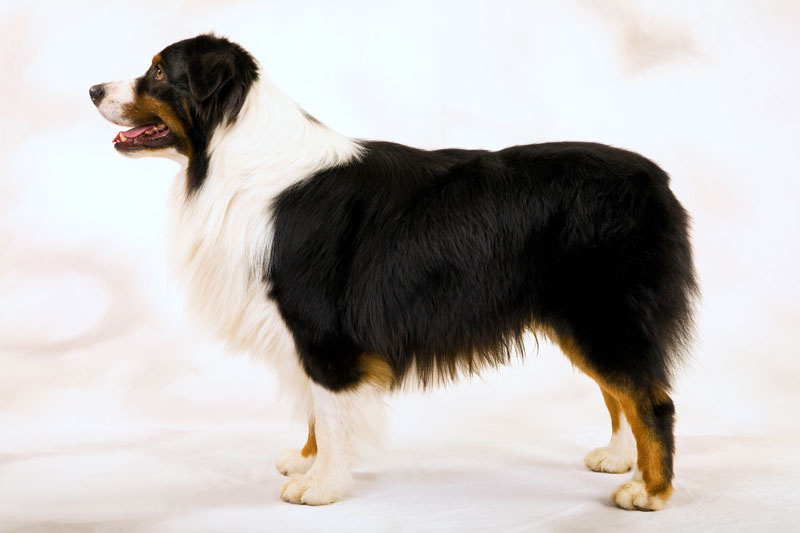Super User
Ariege Pointer
The Braque de l’Ariège, translated into English as the Ariege Pointing Dog or Ariege Pointer, is a French hunting dog of pointing gun dog type. The breed is kept primarily as a hunting dog, not as a pet or showdog.
Ariegeois
The Ariegeois is a breed of dog from the département of Ariège in the Midi-Pyrenées region of southern France. It is a medium-sized pack-hunting scenthound deriving from crossing of Grand Bleu de Gascogne and Grand Gascon Saintongeois hounds with local Briquet dogs. It is used both as a courser and for driving game to waiting guns. While most successful with hares, it is also used for hunting deer and boar. It is distinguished by its friendly nature with other hounds and affection for human companions.
This breed originated in France in 1912, making it a fairly new breed.[citation needed] It is not yet well known outside of its own region. The breed is registered with the Fédération Cynologique Internationale.
Armenian Gampr dog
Armenian Gampr ( gamp’ṙ) is a breed of livestock guardian dog native to the Armenian Highlands, including the territories of modern Eastern Anatolia of Turkey and the Republic of Armenia. The Armenian Gampr was bred by local people using primitive selection. Though not recognized by notable kennel clubs or fancier organizations such as a Selective breeding, pedigree dog breed, they are a distinct landrace, which has been the subject of intense genetic research.
Artois Hound
The Artois Hound is a rare dog breed of dog, and a descendant of the Bloodhound. A scent hound 22-23 inches high at the withers, weighing anything between 55 and 65 pounds, it is a well constructed dog with a slow graceful gait. It has a large, strong head, a medium-length back and a pointed tail that tends to be long and sickle-shaped. Their ears are set at eye level; they have large prominent eyes and quite thick lips.
History
This breed, formerly named Picard, was much appreciated in ancient hunting at the time of Henry IV of France and Louis XIII of France, and much sought after. Selincourt already made much of it, wondering and amazed to see these dogs pulling a hare which had passed by one hour ago in dry weather. Le Couteulx de Canteleu, in Manuel de Vénerie Française (1890), (Manual of French Hunting - 1890), praises also the Artois hound. He reports that the artesian breed of his time was crossbred and difficult to find pure but, in spite of that, it still remained one of the best breeds for hare hunting.
Northern France, bordering the English Channel, consists of the historical regions of Artois Hound. Hounds from this region stem from some of the earliest types.The Artois Hound was a favorite by the 17th century. The Prince Alexandre de Gray wrote to the Prince de Galle, in 1609, of his intention to "send a pack of little d'Artois dogs to the king ..." In fact, this small French hound may have contributed to the formation of the Beagle in England.By the 19th century it became popular among French hunters to avail themselves of the dogs from the British Isles. With the importation of many British types, the inevitable crossbreeding resulted in the deterioration of the pure Artois Hounds. Crossing also took place with the taller, more elegant, longer, scroll-eared hounds called Normands (now extinct). During the 19th century, only the packs kept at Chantilly and those of the Prince de Conde retained the ancient type.In the 1880s, Ernest Levair and his cousin, M. Therouanne, began a 20-year effort to breed the original d'Artois, removing the last of the Normand blood.Their efforts resulted in great success. At the end of the 19th century and at the beginning of the 20th, M. Levoir in Picardy had attempted the re-establishment of the old Artois type without really succeeding. During that period and until the beginning of the First World War, it was another Picard breeder, Mr. Mallard, who dominated the raising of the breed. But if he produced very pretty dogs, as witnessed by his numerous awards in canine shows, they were not always in the type conformed with the description given by contemporary authors. For all their efforts however the Second World War was very damaging for the breed and after the Second World War, it was believed that the Artois was all but extinct.By the middle of the 20th century the breed had nearly disappeared, however in the 1970s a few aficionados
, in particular Mr. Audrechy, (of Buigny les Gamaches in the Somme), decided to reconstitute the breed from a few remaining specimens which they located after along search. Thanks to their efforts the modern day Artois hound closely resembles the original. There are now about 500 dogs registered in their stud books, making a strong comeback since 1975.
Health Problems
There are no known health problems that are specific to the Artois Hound. Any health problems it may develop can be found in most other dog breeds. These dogs may have a maximum life expectancy of 13 years.
Asian
The Asian, also known as the Malayan, is a cat breed similar to the Burmese but in a range of different coat colours and patterns. Longhaired Asians of all varieties are called Tiffanies. Asians are grouped in the foreign section at cat shows.
Health and care
Environment
It makes a good apartment cat, especially if owners will give it safe non-poisonous house plants near the windowsill, which the cat can explore. However, it is recommended that the Asian can only live in apartments, if it does not involve the city. The Asian does not enjoy loud noises from automobiles, buses or trucks. So if needed to live in an apartment, it must be one near a peaceful suburb. The Asian is not a city cat.
Grooming
To keep the coat clean and shiny, owners can do that by simply taking their Asian, and stroking it, while rubbing it with using either a flannel cloth, glove or chamois. They should be brushed once a week.
Health
This is a very long-lived and healthy cat, with very few health issues.
Faults
The Asian's faults vary: it should have blue or green eyes; they should always be solid-colored, with no white spots or streaks; the tail should never become truncated, crooked or very kinky.
Asian Semi-longhair
The Asian Semi-Longhair is a cat breed similar to the Asian except it has semi-long fur. The breed is also known by the name Tiffanie or Tiffany. They are recognized in any of the Asian Shorthair or Burmese colors and patterns. Like the Asian Shorthair, the breed was developed in Britain, and is not currently recognized by any U.S. Registries. It has full recognition in the GCCF. It is related to, and in some registries distinct from, the Chantilly-Tiffany or Foreign Longhair the North American variant.
History
The Tiffanie was developed in the 1980s in the United Kingdom as a longhaired version of the Asian Shorthair.
Australian Cattle Dog
The Australian Cattle Dog (ACD or Cattle Dog), is a breed of herding dog originally developed in Australia for driving cattle over long distances across rough terrain. In the 19th century, New South Wales cattle farmer Thomas Hall crossbreed the dogs used by drovers in his parents' home county, Northumberland, with dingoes he had tamed. The resulting dogs were known as Halls Heelers. After Hall's death in 1870, the dogs became available beyond the Hall family and their associates, and were subsequently developed into two modern breeds, the Australian Cattle Dog and the Australian Stumpy Tail Cattle Dog. Robert Kaleski was influential in the Cattle Dog's early development, and wrote the first Breed standard (dogs) for the breed.The Australian Cattle Dog is a medium-sized, short-coated dog that occurs in two main colour forms. It has either brown or black hair distributed fairly evenly through a white coat, which gives the appearance of a "red" or "blue" dog. It has been nicknamed a "Red Heeler" or "Blue Heeler" on the basis of this colouring and its practice of moving reluctant cattle by nipping at their heels. Dogs from a line bred in Queensland, Australia, which were successful at shows and at Stud (animal) in the 1940s, were called "Queensland Heelers" to differentiate them from lines bred in New South Wales; this nickname is now occasionally applied to any Australian Cattle Dog.As with dogs from other working dog, the Australian Cattle Dog has a high level of energy, a quick intelligence, and an independent streak. It responds well to structured training, particularly if it is interesting and challenging. It was originally bred to herd by biting, and is known to nip running children. It forms a strong attachment to its owners, and can be protective of them and their possessions. It is easy to groom and maintain, requiring little more than brushing during the shedding period. The most common health problems are deafness and progressive blindness (both Heredity conditions) and accidental injury; otherwise, it is a robust breed with a lifespan of 12 to 14 years. Australian Cattle Dogs now participate in a range of activities beyond the herding they were bred for, including competing with their owners in List of dog sports events and working as assistance dogs.
History
In Australia
George Hall and his family arrived in the New South Wales Colony in 1802. By 1825, the Halls had established two cattle stations in the Upper Hunter Shire, and had begun a northward expansion into the Liverpool Plains, New England (New South Wales) and Queensland. Getting his cattle to the Sydney markets presented a problem in that thousands of head of cattle had to be moved for thousands of kilometres along unfenced stock routes through sometimes rugged bush and mountain ranges. A note, in his own writing, records Thomas Hall's anger at losing 200 head in Shrubland.A droving dog was needed, but the colonial working dogs are understood to have been of the Old English Sheepdog type, commonly referred to as Smithfields. Descendants of these dogs still exist, but are useful only over short distances and for yard work with domesticated cattle. Thomas Hall addressed the problem by importing several of the dogs used by drovers in Northumberland, his parents' home county. At that time dogs were generally described by their job, regardless of whether they constituted a breed as it is currently understood. In the manner of the time, the Hall family historian, A. J. Howard, gave these blue mottled dogs a name: Northumberland Blue Merle Drovers Dog.Thomas Hall crossed his Drovers Dogs with dingoes he had tamed, and by 1840 was satisfied with his resulting progeny. During the next thirty years, the Halls Heelers, as they became known, were used only by the Halls. Given that they were dependent on the dogs, which gave them an advantage over other cattle breeders, it is understandable that the dogs were not distributed beyond the Hall's properties. It was not until after Thomas Hall's death in 1870, when the properties went to auction with the stock on them, that Halls Heelers became freely available.By the 1890s, the dogs had attracted the attention of the Cattle Dog Club of Sydney, a group of men with a recreational interest in the new practice of showing dogs competitively. None were stockmen working cattle on a daily basis, and initially they were interested in a range of working dogs, including the Smithfield. They reportedly adopted the term "Australian Cattle Dog" to refer to the dogs being bred from bloodlines originating from Thomas Hall's 'heelers', and prominent members of the group concentrated on breeding these lines. Of these breeders, the Bagust family was the most influential. Robert Kaleski, of Moorebank, New South Wales, a young associate of Harry Bagust, wrote "in 1893 when I got rid of my cross-bred cattle dogs and took up the blues, breeders of the latter had started breeding ... to fix the type. I drew up a standard for them on those lines". This first breed standard for the Cattle Dog breed was published, with photographs, by the New South Wales Department of Agriculture in 1903.Kaleski's standard was adopted by breed clubs in Queensland and New South Wales and re-issued as their own, with local changes. His writings from the 1910s give an important insight into the early history of the breed. However, dog breeder and author Noreen Clark has noted that his opinions are sometimes just that, and he introduces some contradictory assertions in his later writings, as well as some assumptions that are illogical in the light of modern science. Some of these have persisted; for example he saw the red colour form as having more dingo in it than the blue form, and there is a persistent belief that reds are more vicious than blues. The most enduring of Kaleski's myths relate to Dalmatian and Australian Kelpie infusions into the early Cattle Dog breed. These infusions are not referred to in Kaleski's writings until the 1920s and it seems likely that Kaleski sought to explain the Cattle Dog's mottled colouration and tan on legs by similarity to the Dalmatian and Kelpie, respectively. The genetics of coat colour, and the current understanding of hereditary characteristics, make the infusion of Dalmatian to increase the cattle dog's tolerance of horses an extremely unlikely event. There were relatively few motor vehicles in Australia at the beginning of the 20th century, so most dogs of any breed would have been accustomed to horses. The Kelpie breed was developed after the Cattle Dog type was described, so its infusion is unlikely. It is possible that there was some infusion of Bull Terrier but there is no verifiable record of this, and the Cattle Dog has not had the Bull Terrier's instinct to bite and hold, which would have been an undesirable trait. Early in the 1900s there was considerable in-fighting amongst members of the Cattle Dog Club, and a series of arguments about the origin of the breed appeared in newspapers and journals of the time. While many of these arguments were misleading, some irrational, and the majority not supported by historical facts, they continue to be circulated, Through the 1890s, Cattle Dogs of Halls Heeler derivations were seen in the kennels of exhibiting Queensland dog breeders such as William Byrne of Booval, Queensland, and these were a different population from those shown in New South Wales. Little Logic was bred in Rockdale, New South Wales, however Sydney exhibitors saw Little Logic for the first time after the dog had been added to the Hillview kennels of Arch Bevis in Brisbane. The show records of Little Logic and his offspring created a demand in New South Wales for Queensland dogs. By the end of the 1950s, there were few Australian Cattle Dogs whelped that were not descendants of Little Logic and his best known son, Logic Return. The success and popularity of these dogs led to the growth of the nickname "Queensland Heeler".
The prominence of Little Logic and Logic Return in the pedigree (animal) of modern Australian Cattle Dogs was perpetuated by Wooleston Kennels. For some twenty years, Wooleston supplied foundation and supplementary breeding stock to breeders in Australia, North America and Continental Europe. As a result, Wooleston Blue Jack is ancestral to most, if not all, Australian Cattle Dogs whelped since 1990 in any country.
In the United States
In the 1940s Alan McNiven, a Sydney veterinarian, introduced Dingo, Kelpie, German Shepherd, and Kangaroo Hound into his breeding program; however, the Royal Agricultural Society Kennel Club (RASKC) would not register the cross breeds as Australian Cattle Dogs, even though McNiven argued they were true to conformation, colour and temperament. McNiven responded by giving his pups registration papers from dead dogs, and was consequently expelled from the RASKC and all of his dogs removed from the registry. Meanwhile, Greg Lougher, a Napa, California cattle rancher who met Alan McNiven while stationed in Australia during World War II, had imported several adults and several litters from McNiven. After his de-registration McNiven continued to export his 'improved' dogs to the US. Many US soldiers who were stationed in Queensland or NSW during the War discovered the Australian Cattle Dog and took one home when they returned.In the late 1950s a veterinarian in Santa Rosa, California, Jack Woolsey, was introduced to Lougher's dogs. With his partners, he bought several dogs and started breeding them. The breeders advertised the dogs in Western Horsemen stating they were guaranteed to work and calling them Queensland Heelers. Woolsey imported several purebred Australian Cattle Dogs to add to his breeding program, including Oaklea Blue Ace, Glen Iris Boomerang and several Glen Iris bitches. The National Stock Dog Registry of Butler, Indiana, registered the breed, assigning American numbers without reference to Australian registrations. The small number of Australian Cattle Dogs in Canada at the time were primarily working dogs on farms and ranches scattered across large distances. However, the fledgling breed club held conformation shows, obedience and agility competitions, and entered their dogs in sports including flyball and lure coursing. At the end of 1980, Landmaster Carina was named the first Australian Cattle Dog in Canada to gain both her conformation and obedience titles. Although originally bred for its ability to work cattle, the Texas Heeler is increasingly used as a pet and a companion in dog sports. As with most cross breeds, the Texas Heeler's size and appearance is a variable combination of the parent breeds.
Health and lifespan
Lifespan
In a small sample of 11 deceased dogs, Australian Cattle Dogs had a median longevity of 11.7 years (maximum 15.9 yrs). A larger survey of 100 deceased dogs yielded a mean longevity of 13.41 years with a standard deviation of 2.36 years. The median longevities of breeds of similar size are between 11 and 13 years. There is an anecdotal report of a Cattle Dog named Bluey, born in 1910 and living for 29.5 years, but the record is unverified. Even if true, Bluey's record age would have to be regarded more as an uncharacteristic exception than as an indicator of common exceptional longevity for the entire breed.
Common health problems
The Australian Cattle Dog carries Dominance (genetics) piebald alleles that produce white in the coat and skin and are linked to Congenital disorder Heredity deafness, though it is possible that there is a multi-gene cause for deafness in a dog with the piebald pigment genes. Around 2.4% of Cattle Dogs in one study were found to be deaf in both ears and 14.5% were deaf in at least one ear.The Australian Cattle Dog is one of the dog breeds affected by progressive retinal atrophy. It has the most common form, Progressive Rod/Cone Degeneration (PRCD), a condition that causes the Rod cell and Cone cell in the retina of the eye to deteriorate later in life, resulting in blindness. PRCD is an autosome and a dog can be a carrier of the affected gene without developing the condition.Hip dysplasia (canine) is not common in the breed, but most of these are not common. Hereditary polioencephalomyelopathy of the Australian Cattle Dog is a very rare condition caused by an inherited biochemical defect. Dogs identified with the condition were completely paralysed within their first year. Based on a sample of 69 still-living dogs, the most common health issues noted by owners were musculoskeletal (spondylosis, elbow dysplasia, and arthritis) and reproductive (pyometra, infertility, and false pregnancy), and blindness.
Australian Kelpie
The Kelpie is an Australian Herding dog successful at Muster (livestock) and droving with little or no command guidance. They are medium-sized dogs and come in a variety of colours. Kelpies have been exported throughout the world and are used to Muster (livestock) livestock, primarily sheep, cattle and goats.The breed has been separated into two distinct varieties: the show or bench Kelpie and the working Kelpie. The show Kelpie is seen at conformation dog shows in some countries and is selected for appearance rather than working instinct. Working Kelpies are bred for working ability rather than appearance.
Breed standards
Robert Kaleski published the first standard for the Kelpie in 1904. The standard was accepted by leading breeders of the time and adopted by the Kennel Club of New South Wales. Contemporary breed standards vary depending on whether the breed registry is for working or show Kelpies. It is possible for a dog to both work and show, but options for competition in conformation shows might be limited depending on ancestry and the opinions of the kennel clubs or Breed clubs involved.In Australia, there are two separate registries for Kelpies. This is one of the most popular sheep dogs in the world.
Working Kelpies are registered with the (WKC), which is the primary authority on the breed standard, and/or the State Sheepdog Workers Association. The WKC encourages breeding for working ability, and allows a wide variety of coat colours. The wide standards allowed by the WKC mean that Working Kelpies do not meet the standard for showing.
Show Kelpies are registered with the Australian National Kennel Council, which encourages breeding for a certain appearance and limits acceptable colours. Only Show Kelpies may be shown in Australia.
= Breed standards outside Australia
=
In the USA, the Kelpie is not recognised as a breed by the American Kennel Club (AKC). The, which promotes the dog as a working breed, does not want the breed to be promoted by the AKC. Kelpies are recognised by the (UKC) in the United States and may compete in UKC events. Kelpies are also recognised by the (CKC) in Canada and may compete in CKC events. The also does not permit Working Kelpies to be shown.
Working Kelpies
The Working Kelpie comes in three coat types: smooth, short, and rough. The coat can be almost every colour from black through light tan or cream. Some Kelpies have a white blaze on the chest, and a few have white points. Kelpies sometimes have a double coat, which sheds out in spring in temperate climates. is not unusual, and can look like a double coat.Working Kelpies vary in size, ranging from about 19 inches to as much as 25 inches and from 28-60 lbs. The dog's working ability is unrelated to appearance, so Stockman (Australia) looking for capable working dogs disregard the dog's appearance.A Working Kelpie can be a cheap and efficient worker that can save farmers and graziers the cost of several hands when mustering livestock. The good working Kelpies are herding dogs that will prevent stock from moving away from the stockman. This natural instinct is crucial when mustering stock in isolated gorge country, where a good dog will silently move ahead of the stockman and block up the stock (usually cattle) until the rider appears. The preferred dogs for cattle work are Kelpies, often of a special line or a Kelpie cross. They will drive a Herd of livestock long distances in extremes of climates and conditions. Kelpies have natural instincts for managing livestock. They will work sheep, cattle, goats, pigs, poultry, and other domestic livestock. The Kelpie's signature move is to jump on the backs of sheep and walk across the tops of the sheep to reach the other side and break up the jam. A good working Kelpie is a versatile dog—they can work all day on the farm, ranch or station, and trial on the weekends. Kelpies compete and are exhibited in livestock working trials, ranging from yards or arenas to large open fields working sheep, goats, cattle or ducks.
Australian Mist
The Australian Mist (formerly known as the Spotted Mist) is a breed of cat developed in Australia.
History
This breed was developed by Truda Straede in Australia commencing in 1976, hence its name. The breed was developed by crossing the Burmese (cat), Abyssinian (cat), and miscellaneous domestic short-haired cats to create a short-haired cat with a spotted coat. The name was changed from "Spotted Mist" to "Australian Mist" in 1998, when cats with marbled coats, rather than spots, were accepted as part of the breed.
Australian Shepherd
The Australian Shepherd, commonly known as the Aussie, is a breed of dog that was developed on ranches in the western United States. Despite its name, the breed was not developed in Australia, but rather in the United States where they were seen in the West as early as the 1800s. The breed rose gradually in popularity with the boom of western riding after World War I. They became known to the general public through rodeos, horse shows, and The Walt Disney Company movies made for television.For many years, Aussies have been valued by stockmen for their versatility and trainability. They have a similar look to the popular English Shepherd and Border Collie breeds. While they continue to work as stockdogs and compete in herding trials, the breed has earned recognition in other roles due to their trainability and eagerness to please, and are highly regarded for their skills in obedience. Like all working breeds, the Aussie has considerable energy and drive, and usually needs a job to do. It often excels at dog sports such as, flyball, and disc dog. They are also highly successful search and rescue dogs, disaster dogs, detection dogs, guide, service, and therapy dogs.

